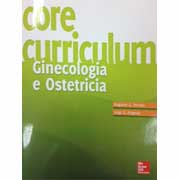252. Transvaginal endoscopic cholecystectomy in human beings: preliminary results
Forgione A, Maggioni D, Sansonna F, Ferrari C, Di Lernia S, Citterio D, Magistro C, Frigerio L, Pugliese R
J Laparoendosc Adv Surg Tech A. 2008;18(3):345-51.
ABSTRACT Introduction: The exciting concept of performing surgery in the peritoneal cavity without abdominal incisions by means of flexible endoscopes introduced through natural orifices-natural orifice transluminal endoscopic surgery (NOTES) has been widely investigated in recent years in experimental settings. However, experience with this procedure in human beings is still lacking. In this paper, we report the preliminary results of a small consecutive series of transvaginal endoscopic cholecystectomies. Methods: A standard double-channel gastroscope introduced into the abdominal cavity through a posterior colpotomy was used to perform the cholecystectomy. The introduction of a 5-mm trocar in the left-upper abdominal quadrant was mandatory to create and monitor the pneumoperitoneum and allow the application of the standard laparoscopic clips. This port was also used to introduce a grasper that assisted in the exposure of the gallbladder. The gallbladder was removed through the vagina and was protected in a plastic bag. Results: Since July 2007, 3 patients were successfully operated on by this approach, including 1 morbidly obese woman with a body mass index (BMI) of 45. The mean operative time was 136 minutes (range, 110-190). No postoperative complications occurred, and the patients did not complain of pain at both access sites. At the 1-month follow-up, none of the patients complained of dyspareunia. Conclusions: The transvaginal cholecystectomy is feasible, safe, and reproducible in women within a wide range of BMI. NOTES might dramatically change the way surgery will be conceived and performed in the future, as it holds the potential to abolish the historic association of surgery with pain and scars.
